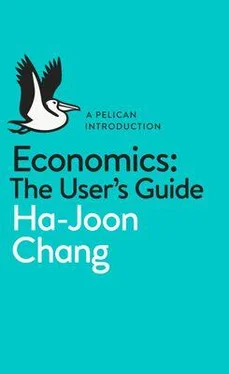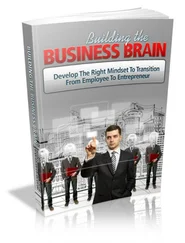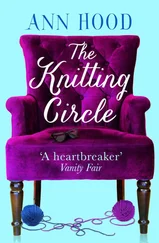Bruce Hood - The Domesticated Brain - A Pelican Introduction (Pelican Books)
Здесь есть возможность читать онлайн «Bruce Hood - The Domesticated Brain - A Pelican Introduction (Pelican Books)» весь текст электронной книги совершенно бесплатно (целиком полную версию без сокращений). В некоторых случаях можно слушать аудио, скачать через торрент в формате fb2 и присутствует краткое содержание. Год выпуска: 2014, ISBN: 2014, Издательство: Penguin Books Ltd, Жанр: Старинная литература, на английском языке. Описание произведения, (предисловие) а так же отзывы посетителей доступны на портале библиотеки ЛибКат.
- Название:The Domesticated Brain: A Pelican Introduction (Pelican Books)
- Автор:
- Издательство:Penguin Books Ltd
- Жанр:
- Год:2014
- ISBN:9780141974873
- Рейтинг книги:4 / 5. Голосов: 1
-
Избранное:Добавить в избранное
- Отзывы:
-
Ваша оценка:
- 80
- 1
- 2
- 3
- 4
- 5
The Domesticated Brain: A Pelican Introduction (Pelican Books): краткое содержание, описание и аннотация
Предлагаем к чтению аннотацию, описание, краткое содержание или предисловие (зависит от того, что написал сам автор книги «The Domesticated Brain: A Pelican Introduction (Pelican Books)»). Если вы не нашли необходимую информацию о книге — напишите в комментариях, мы постараемся отыскать её.
The Domesticated Brain: A Pelican Introduction (Pelican Books) — читать онлайн бесплатно полную книгу (весь текст) целиком
Ниже представлен текст книги, разбитый по страницам. Система сохранения места последней прочитанной страницы, позволяет с удобством читать онлайн бесплатно книгу «The Domesticated Brain: A Pelican Introduction (Pelican Books)», без необходимости каждый раз заново искать на чём Вы остановились. Поставьте закладку, и сможете в любой момент перейти на страницу, на которой закончили чтение.
Интервал:
Закладка:
This preparation for morality is reflected in the way young infants interpret others’ behaviours. Even before they are capable of understanding any instruction from an adult, babies can tell the difference between right and wrong. As we have seen, babies as young as twelve months interpret moving geometric shapes as having goals and intentions because they looked longer when the objects changed their behaviour from helping to hindering. 7Arguably they were simply telling the difference between the good and the bad guys. In an extension of this original discovery, infant psychologist Kiley Hamlin at the University of British Columbia wanted to know whether telling the difference translated into actual preferences. After watching a sequence of the helper and hinderer puppets, Hamlin offered babies the opportunity to play with either puppet. Four out of five twelve-month-old infants chose the puppet that had been seen to be helpful. 8In another scenario, a puppet dropped its ball, which rolled over to one of two other puppets. One puppet returned the ball to its owner, whereas the other puppet ran off with it. Again, when offered the choice, infants preferred to play with the helpful puppet. Babies are not simply demonstrating that they can tell the difference between behaviours in these puppet shows; they are expressing a preference to be with the one that helps.
Not only do they prefer, but infants also punish. In one further set of these infant morality plays, a puppet that had previously stolen a ball was having difficulty opening a box. Along came two puppets. One helped the naughty thief open his box while the other one jumped on top of it, slamming it shut. At eight months, babies preferred to play with the puppet who thwarted the ball thief. Not only did they prefer to see justified retaliation, but they were also capable of dishing out punishment to antisocial puppets themselves. When they were given the opportunity to hand out treats to the puppets, two-year-olds punished the ball thief by giving them fewer or no treats and rewarded the good puppet that had retrieved the ball. 9Playing with puppets is all very well, but how do these preferences translate into real interactions with humans? To test this, two actresses each retrieved a toy and offered it to twenty-one-month-old infants. One of them failed in her attempt to hand the toy over by accidentally dropping it short, whereas the other offered the toy but snatched it back from the child just as they were about to grasp it. After witnessing the kind and the teasing adults, the infant was given the opportunity to retrieve a dropped toy to give to one of them in return. Three out of four infants preferred to hand the toy to the actress who had tried to be helpful even though unsuccessful, rather than the other one who had also smiled and spoken nicely to them but was deliberately mean-spirited. 10This suggests that infants are treating helpfulness as a disposition or trait in others – something that predicts how they will behave. Babies understand that there are the ‘good guys’ who are worth becoming friendly with because they are likely to help you in the future. 11
These findings have led my colleague Paul Bloom at Yale to argue that babies are born with the ‘sprouts’ for morality. 12Even though they lack a full moral understanding of the adult world of crime and punishment, they recognize the basic difference between good and bad. Well before they enter a social world where they have to get on with others in the playgroup, children already have a sense of a reciprocal altruism – that one good turn deserves another and that freeloaders or mean people should be punished.
The property instinct
When young children get into conflicts, it is more often than not a dispute over ownership. About 75 per cent of young children’s arguments with peers concern possessions. 13As soon as a toy comes into the possession of another child, preschoolers want it. 14Owning stuff is all to do with status amongst competitors. These early disputes are a taster for later life in the real world. In many societies, especially in Western culture, possessions serve important functions as ostensive markers for self-identity to the extent that some adults will put their lives at risk defending their property. Every year, car owners are seriously injured or sometimes killed trying to prevent the theft of their vehicle by standing in front of, or clinging on to, the bonnet as it is driven away – acts that they would never contemplate in the cold light of day. 15Ownership can make us behave irrationally. William James was one of the first to recognize this importance of ownership as a reflection of self when he wrote,
A man’s Self is the sum total of all that he CAN call his, not only his body and his psychic powers, but his clothes and his house, his wife and children, his ancestors and friends, his reputation and works, his lands and horses, and yacht and bank-account. 16
Later, Russell Belk a professor of marketing, would call this materialist perspective the extended self, 17whereby we use possessions to broadcast to others our own sense of identity; something that advertisers have understood ever since they realized that linking positive role models to products was the secret to sales success. We are what we own, which explains much of our emotional overreaction when our possessions are violated through theft, loss or damage. This is because we experience these transgressions as a personal tragedy or insult against us.
We are a species that spends extraordinary amounts of time, effort and resources in acquiring possessions, and when our stuff is taken away from us we feel personally aggrieved. Some have even gone as far as to call it a property instinct , wired into our brains. 18As such, understanding the power of ownership and the rules that accompany possessions are key components of domestication. We must learn to respect ownership rights in order to live together harmoniously. When I take possession of an object, it becomes ‘mine’ – my coffee cup, or my telephone. Ownership plays an important role in domestication because it is one way to demarcate acceptable and unacceptable behaviours. Theft and vandalization are wrong precisely because they are violations against another’s property.
Children as young as fourteen months know what it means to own something 19and by two years many already have possessions that they are attached to. 20Around this time they begin to use possessive pronouns such as ‘mine’ and ‘yours’. At first, children only enforce property rights for their own possessions, so two-year-olds will protest if their stuff is taken away, 21but by three years, children will intervene on behalf of another by telling a puppet to ‘stop’ if it tries to steal someone else’s hat. 22
Understanding ownership can be complex as the rules are not always obvious. As Waterloo psychologist Ori Friedman points out, it may be acceptable to collect seashells from a public beach, but to take them from a stall selling them is theft. 23There is nothing on the shell to tell you who owns it, but rather we rely on rules and conventions that have to be learned. Collecting seashells from many national parks is illegal, so without knowing the local regulations, one can easily fall foul of the law. Or it might be an unfamiliar custom. Each year, tourists return lava rocks that they have collected from Hawaii. It is not illegal to take them, but when they learn of the bad-luck curse that is said to befall those who remove the rocks from the island, they feel compelled not to tempt the local superstition.
Then there are some ownership disputes that can be baffling and ambiguous. Imagine a boy trying to knock a coconut from a tree. He manages to dislodge it with a well-aimed rock, but it falls at the feet of another boy walking past, who picks it up. Which of them has the rightful claim of ownership? The one who put in the failed effort to retrieve the coconut or the one who ended up with it in their possession? Or consider the real-life case of the Banksy graffiti artwork painted in May 2012 on the outside wall of a North London thrift shop to celebrate the Queen’s Jubilee. Only days after the mysterious artist painted it on a mundane section of wall, it was chiselled off by the building’s owners and sold at auction for $1.1m in Miami despite attempts by the London authorities to prevent its sale as a piece of public art. 24The owners of the building argued that, as it was their wall, they owned the art. The residents argued that it was public property, and if they had asked a three-year-old, they might have got the same answer. When it comes to the trade-off between materials and effort, preschoolers are more likely to attribute ownership to the one who did all the work and came up with the idea, whereas most adults (unless they are local London residents) take into consideration who owned the material. 25The same goes for intellectual property. When children were asked to make up a story and then the experimenter retold it to another, either acknowledging that it was the child’s idea or taking the credit themselves, children as young as five years disliked those who took credit after stealing their ideas. 26
Читать дальшеИнтервал:
Закладка:
Похожие книги на «The Domesticated Brain: A Pelican Introduction (Pelican Books)»
Представляем Вашему вниманию похожие книги на «The Domesticated Brain: A Pelican Introduction (Pelican Books)» списком для выбора. Мы отобрали схожую по названию и смыслу литературу в надежде предоставить читателям больше вариантов отыскать новые, интересные, ещё непрочитанные произведения.
Обсуждение, отзывы о книге «The Domesticated Brain: A Pelican Introduction (Pelican Books)» и просто собственные мнения читателей. Оставьте ваши комментарии, напишите, что Вы думаете о произведении, его смысле или главных героях. Укажите что конкретно понравилось, а что нет, и почему Вы так считаете.











